Mountain Maid Gold Project
The Mountain Maid deposit south of Cardross is hosted by the Silurian Nundah Granodiorite, which intrudes gneissic metamorphic rocks and granite plutons of the Proterozoic Dargalong Metamorphic Group. The Nundah Granodiorite typically comprises a medium- to coarse-grained leucocratic biotite-muscovite granodiorite and an adamellite. In the Mountain Maid area, the Nundah Granodiorite has been intruded by Permo-Carboniferous dykes and small stocks varying from rhyolite, rhyodacite porphyry, monzogranite, granodiorite to monzonite porphyry. Morrison (2017) classifies the Cardross copper and Mountain Maid projects as intrusion-related mineral systems.
Modern exploration of the Mountain Maid area commenced in 1994 when Cyprus Gold Australia Corporation (Cyprus Gold) explored the area as part of a larger exploration project. In the Mountain Maid area, Cyprus Gold undertook initial programs of soil and rock chip sampling, followed by several campaigns of RC and diamond drilling.
In March 2009, Axiom completed a program of seven diamond holes, which was followed by a larger program of 53 RC holes in 2010.
Of the drilling programs completed to date at Mountain Maid, Axiom's RC drilling provides the largest proportion of the resource dataset, contributing 77% of the composites used for resource estimation. Quality of the sampling and assaying for this dataset was closely monitored by comprehensive QAQC, including recording of recovered sample weights, routine insertion of field duplicates, submission of coarse blanks and reference standards and inter-laboratory check assays.
Historical drilling is summarised below (Axiom 2009)
Mountain Maid Mineral Resource Estimation
The Company commissioned BMS Pty Ltd to estimate a mineral resource for the Mountain Maid mineralisation and which incorporated new drilling data which had not been included in the previous JORC 2014 resource statement prepared by Axiom Mining in 2010 (See Axiom announcement dated 10 December 2010).
BMS has identified 4 domains reflecting different average gold grades and/or host rocks (see ASX announcement dated 20th February 2023). The domains are:
- Domain 200: Oxidised granodiorite host rock
- Domain 300: Fresh granodiorite host rock
- Domain 400: Quartz monzonite porphyry host rock (zone 1)
- Domain 500: Quartz monzonite porphyry host rock (zone 2)
BMS estimated a resource for each of the domains with the total of these resources providing the global inferred mineral resource presented in Figure 1(a). The resource estimate for the oxide mineralisation (domain 200) is also presented in Figure 1(b). Our preferred cut-off grade is 0.2g/t Au for the global resource and 0.2g/t for the oxide resource.
 Figure 1. (a) Global inferred mineral resource including oxide resource. (b) Oxide resource only. Source: BMS
Figure 1. (a) Global inferred mineral resource including oxide resource. (b) Oxide resource only. Source: BMS
The two quartz monzonite porphyry zones (Domain 400 and 500) generally have higher grades than the granodiorite host and the Company believes that they could represent a conduit for mineralising fluids. Figure 2 outlines the combined resource estimate for both domains.
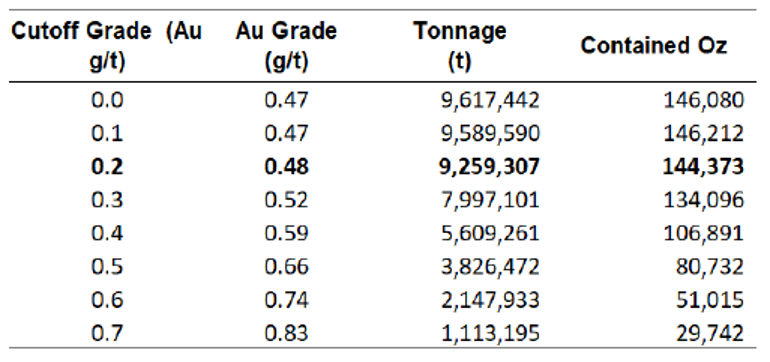 Figure 2. The resource estimate for Domains 400 and 500. Source: BMS.
Figure 2. The resource estimate for Domains 400 and 500. Source: BMS.
The resource is partially covered by a low-rise sandstone mesa. Figure 4 is a plan view which depicts the mesa, the outline of mineralisation at surface (and below the mesa) and the collar location of the drilling. Figure 4 also shows the outline of the quartz monzonite porphyry domains 400 and 500. They are relatively central to the broader mineralisation envelope. However, it is important to note that one of the quartz monzonite domains it open to the south. This is discussed later in this report, but the most southerly holes have intersections including 19 m @ 1.30 g/t Au from 34 m (MMRC050) and 16 m @ 1.28 g/t Au from 50 m (MMRC041) and with this mineralisation remaining open to the south due to a lack of drilling.
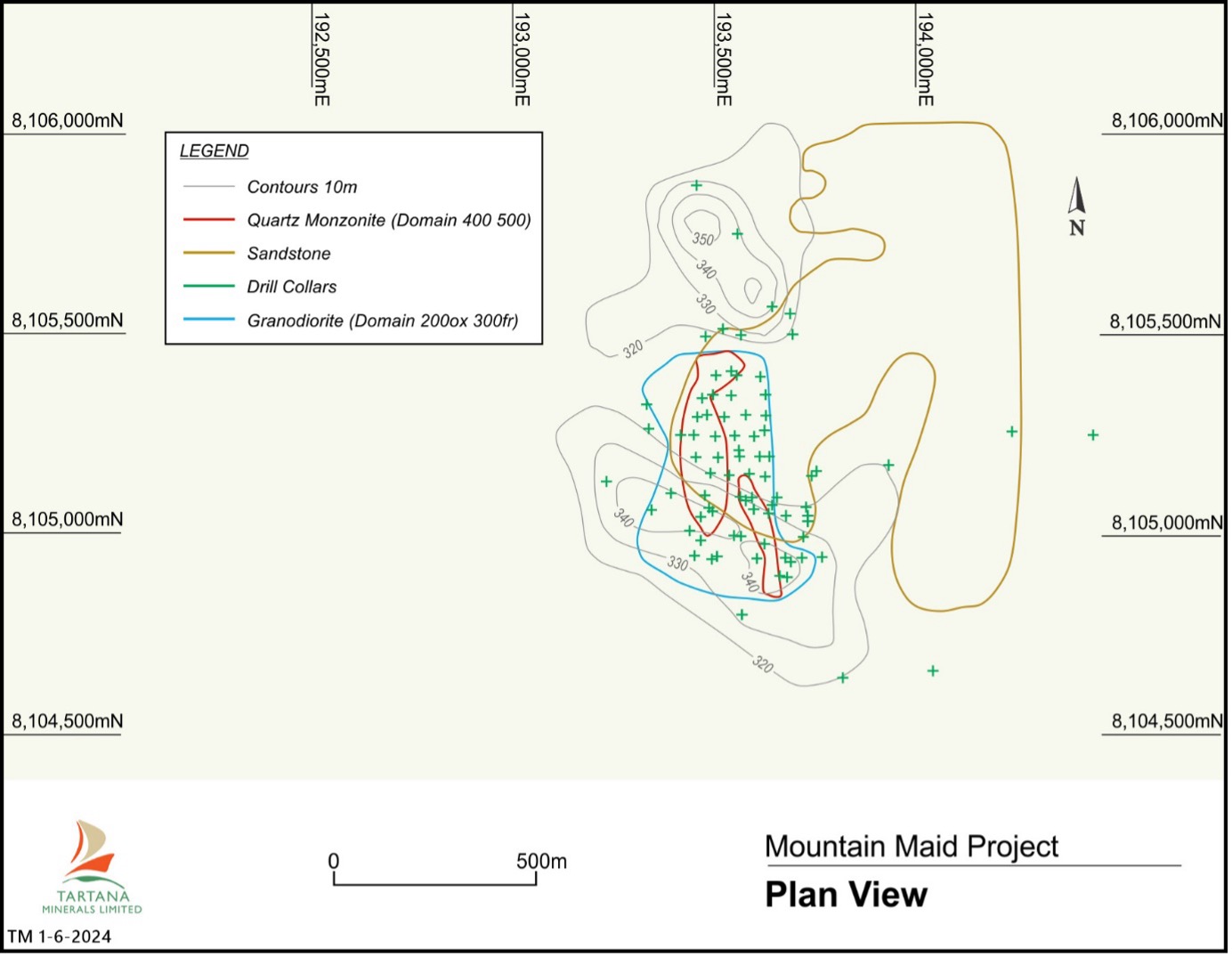 Figure 3. Plan view of the Mountain Maid resource including the location of drillhole collars and mineralised domains. Source: BMS. (See ASX announcement dated 20th February 2023.
Figure 3. Plan view of the Mountain Maid resource including the location of drillhole collars and mineralised domains. Source: BMS. (See ASX announcement dated 20th February 2023.
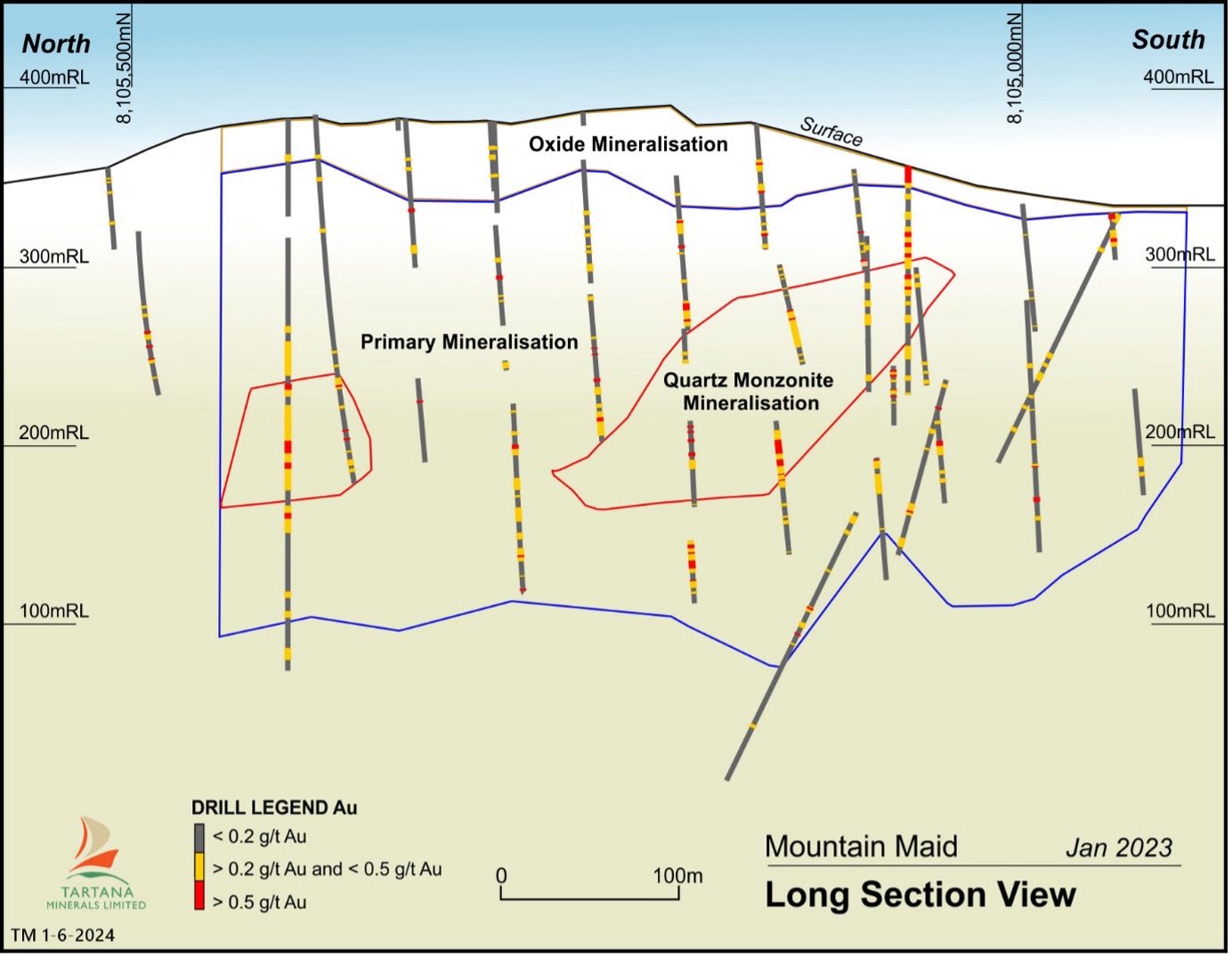 Figure 4. Mountain Maid long section showing drillhole traces, oxide granodiorite (Domains 200 and 300) as well has the higher-grade quartz monzonite porphyry mineralisation (Domains 400 and 500). Source: BMS.
Figure 4. Mountain Maid long section showing drillhole traces, oxide granodiorite (Domains 200 and 300) as well has the higher-grade quartz monzonite porphyry mineralisation (Domains 400 and 500). Source: BMS.
Figures 5 and 6 present cross-sections through the deposit highlighting the outline of the various domains. The cross sections support the interpretation that the mineralisation is east dipping, particularly the higher-grade quartz monzonite porphyry zones.
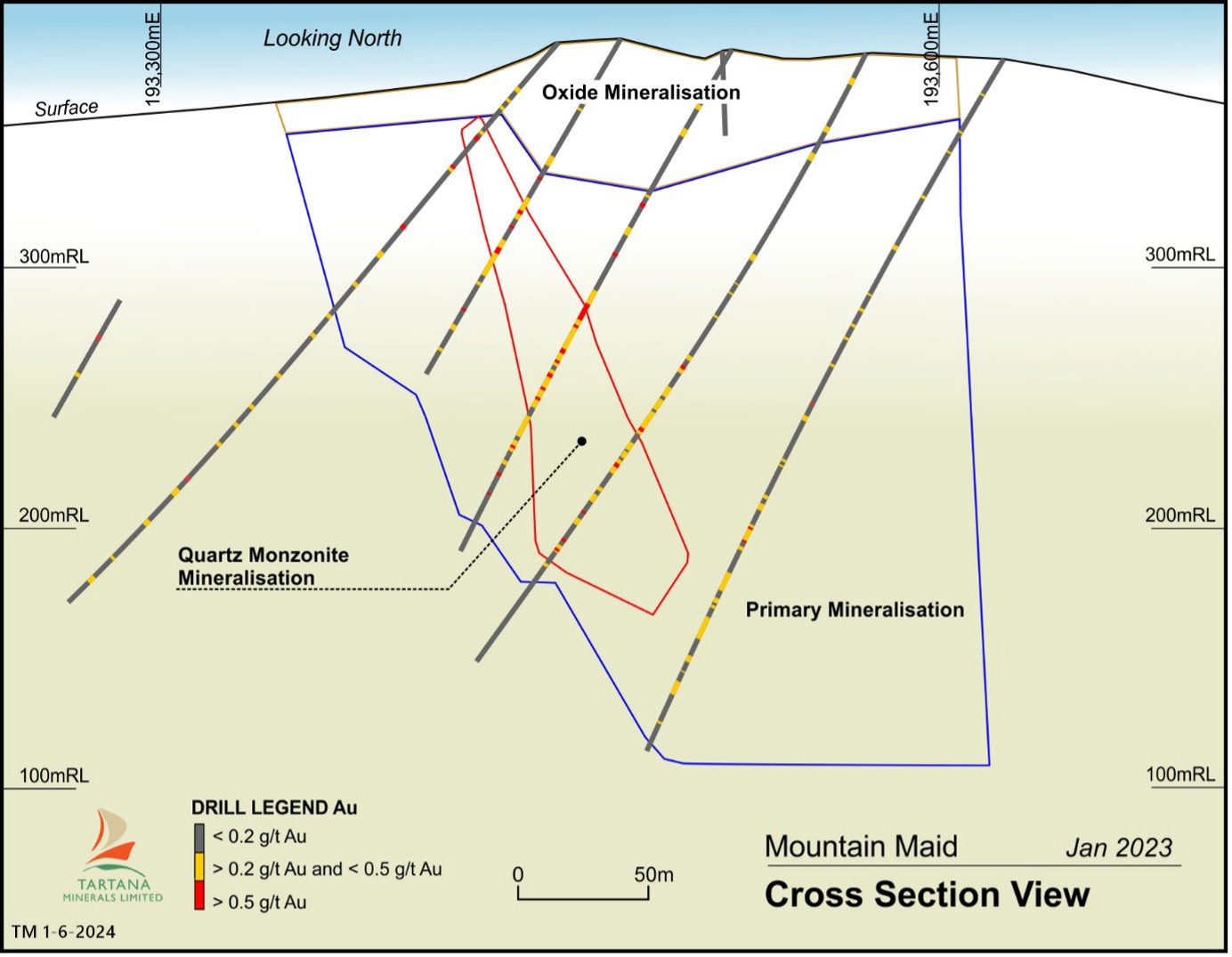 Figure 5. Cross-section at 8105200N highlighting drill resource outlines and drill hole paths. Note mineralisation is dipping steeply east. Source: BMS.
Figure 5. Cross-section at 8105200N highlighting drill resource outlines and drill hole paths. Note mineralisation is dipping steeply east. Source: BMS.
 Figure 6. Cross-section at 8105400N highlighting drill resource outlines and drill hole paths. Again, note mineralisation is dipping steeply east. Source: BMS.
Figure 6. Cross-section at 8105400N highlighting drill resource outlines and drill hole paths. Again, note mineralisation is dipping steeply east. Source: BMS.
Exploration Opportunities – the Kidston Geological Comparison
Kidston is located 280 km NW from Townsville and southwest from Cairns, in far north Queensland. Large-scale production commenced in 1984 by Kidston Gold Mine Ltd (then a subsidiary of Placer Development Ltd) with total gold production of 5 Moz by 2000 when production ceased. Ore production was 80 Mt @ 1.56g/t Au from the original Wises Pit and ~29 Mt @ 1.16g/t Au from the Eldridge pit. The total resource was 133 Mt @ 1.24g/t Au for 5.32Moz Au (Morrison, 2007).
The mineralisation is interpreted to involve multiple brecciation episodes of a stockwork of quartz veins (commonly with molybdenite, pyrite ±arsenopyrite ±chalcopyrite) within a rhyolite. The economic grade mineralisation is interpreted as being deposited after the brecciation episodes and is confined to an inverted funnel shaped zone of
quartz-carbonate-sulphide veining and cavities referred to as the sheeted vein zone. This funnel shaped zone has a barren core, with the orebody having an annular shape, near the breccia pipe margin on any level, with the diameter decreasing downwards (Morrison, 2007).
Figure 7 shows the interpreted plan for Kidston highlight the outlining the annular shape of the gold ore on the margins of the intrusion as well as the metal zonation within the pipe structure.
 Figure 7. (a) Plan view of Kidston gold mineralisation, note the arcuate shapes at the periphery of the intrusion. (b) Metal zonation within the Kidston pipe. (Source: Morrison 1997 Ore Controls in the Kidston Breccia Hosted Gold Deposit, EGRU Breccia Symposium Field Guide 2007.
Figure 7. (a) Plan view of Kidston gold mineralisation, note the arcuate shapes at the periphery of the intrusion. (b) Metal zonation within the Kidston pipe. (Source: Morrison 1997 Ore Controls in the Kidston Breccia Hosted Gold Deposit, EGRU Breccia Symposium Field Guide 2007.
The interesting comparison of Mountain Maid with Kidston is that the mineralisation at Mountain Maid has always been interpreted as trending north-south rather than an arcuate shape with the Kidston model also offering potential for other mineralised bodies nearby.
 Figure 8. Exploration potential at the edges of the mineralisation which has not been tested, particularly if the mineralisation is arcuate in shape as seen at Kidston gold mine. The Mountain Maid gold mineralisation also has associated Cu, Mo, Bi, Te, Sn and Sb suggesting it is a deeper system than the upper parts of the Kidston pipe.
Figure 8. Exploration potential at the edges of the mineralisation which has not been tested, particularly if the mineralisation is arcuate in shape as seen at Kidston gold mine. The Mountain Maid gold mineralisation also has associated Cu, Mo, Bi, Te, Sn and Sb suggesting it is a deeper system than the upper parts of the Kidston pipe.
Metallurgy
Leach testwork has been conducted by both Axiom Mining and Cyprus Amax. The most recent results were conducted by Ammtex Ltd in 2010 and involved intermittent bottle roll agitation cyanidation time leach testwork on crushed samples with a crush size of 100% passing 12.5 mm. Testing was carried out in a sealed leach bottle for an extended leach time of 240 hours (10 days). Agitation is suppled intermittently, being 1 minute for every hour of leach contact time.
Ammtec report that excellent gold recoveries (>80%) were achieved from the 2 samples closest to surface. It notes that these samples would be considered highly amenable to heap leach processing, with rapid leaching and low to moderate reagent consumptions (see Figure 10).. Reasonable recovery (>50%) was achieved from one other relatively shallow sample. Otherwise, the combination of low grades and lack of “natural” liberation of contained gold has resulted in relatively poor response for the remaining 6 samples at the coarse crush size employed.
Ammtec believes that finer crushing and / or grinding would result in improved recoveries although the extent of the improvement cannot be determined from the data at hand. Given that the near surface material is obviously very amenable, any additional testing should perhaps focus on the deeper materials at this stage.
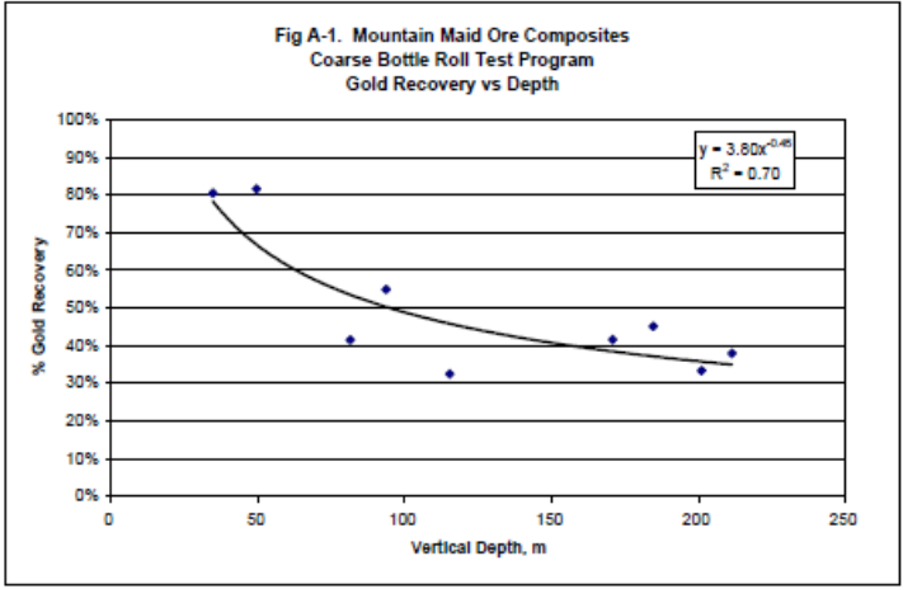 Figure 9. Mountain Maid coarse bottle roll testing gold recovery results versus sample depth. Source: Ammtec Ltd 2010. Metallurgical Testwork conducted on 9 Composites of Gold Ore Samples from the Mountain maid Project.
Figure 9. Mountain Maid coarse bottle roll testing gold recovery results versus sample depth. Source: Ammtec Ltd 2010. Metallurgical Testwork conducted on 9 Composites of Gold Ore Samples from the Mountain maid Project.
Mountain Maid Regional Exploration
The area in the Mountain Maid – Cardross area is prospective for precious and base metal exploration. Figure 1 outlines the alteration across this region as presented by Morrison 2017.
Tartana Minerals is particularly focused on the Kitchener and Arizona projects. However, an IP survey conducted by Axiom Mining (see Axiom Mining Annual Report 2009) identified the Mountain Maid – Split Rock corridor as also being prospective with a several IP anomalies having not been tested by drilling.
 Figure 1. Alteration zones and prospects in the Cardross – Mountain Maid region. Source: Morrison G. 2017 Intrusion Related Gold Deposits in North Queensland Presentation dated December 2017. Available at: at: https://www.researchgate.net/publication/323827367
Figure 1. Alteration zones and prospects in the Cardross – Mountain Maid region. Source: Morrison G. 2017 Intrusion Related Gold Deposits in North Queensland Presentation dated December 2017. Available at: at: https://www.researchgate.net/publication/323827367
 Figure 2. IP Anomalies in the Mountain Maid – Split Rock corridor requiring testing by drilling. (source: Axiom Mining 2009 Annual Report).
Figure 2. IP Anomalies in the Mountain Maid – Split Rock corridor requiring testing by drilling. (source: Axiom Mining 2009 Annual Report).

